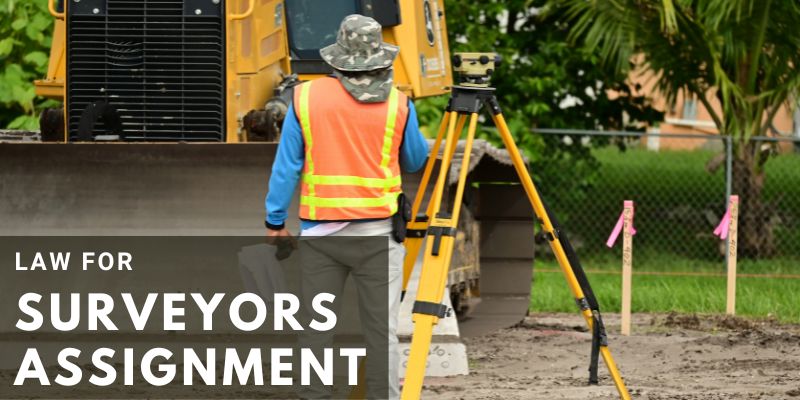Scenario
You are a surveyor on the staff of a well-known established consultancy M Harris LLP. Your client,
Thistlewood Holdings PLC, is the owner and operator of ‘The Paradise Centre’, a large, modern,
mixed-use retail site based in the City of Liverpool, UK.
Your client recently appointed a contractor known as Axis Limited to undertake the major
refurbishment of its ‘flagship’ luxury retail unit located within The Paradise Centre.
A brief pre-commencement site meeting was held to discuss the works, but no contract was
formalised between Thistlewood Holdings and Axis. As Axis have worked with your client
previously without issue, a contract was not considered to be necessary.
The contractor had progressed works to the satisfaction of your client until a recent design team
meeting held midway through the project. At that meeting Thistlewood Holdings confirmed that as
Axis had overvalued their previous application for payment, your client intends to deduct the
overpayment from the contractors next payment application. At the same meeting, Axis responded
to suggest that far from overvaluing the previous payment application, your client had in fact
significantly undervalued the same application.
Senior surveyors from both organisations hold urgent talks to try to rectify the situation but fail to
make progress on this issue and a wide range of other complex technical points relating to structural
alterations and mechanical and electrical services. Axis threatens to suspend all works imminently if
the matters cannot be resolved within the next one to two months. The parties are now engaged in
an ongoing dispute.
Your client cannot tolerate a significant delay to completion of the refurbishment of the unit. The
Paradise Centre is under financial pressure to re-let the prime retail unit and has been receiving
negative publicity on social media and in local press relating to their failure to re-let the prominent
premises.
To move forward, your client considers that their only remaining option is to take matters to court in
order to obtain a decision on the sums in dispute. Your client seeks your advice.
Also Check Out: Illustrate the Potential Impact on Law
Task
Use your knowledge of the law of contract and dispute resolution methods to write a report that
advises your client, Thistlewood Holdings, on the enforceability of their agreement with Axis
together with the most appropriate method/s that could be used to resolve the points in dispute
between the parties.
Your report must provide legal advice and you should:
a. using legal principles, outline the elements that must be present to form a legally binding
contract;
b. use your knowledge of contract formation to critically examine whether an agreement has
been formed between the parties using appropriate legal principles;
c. examine the scenario facts to reach reasoned conclusions as to the most effective form(s) of
dispute resolution available to Thistlewood Holdings in the context of the presented scenario.
Reference list and bibliography
You should include a reference list with a minimum of ten separate relevant and appropriate
sources that you have written about and cited within your work.
You should also include a bibliography list with a minimum of ten separate relevant and appropriate
sources that have influenced your thinking but are not cited in your work.
© University College of Estate Management 2022 Page 3 of 8
Additional information
Further information to support you with this assignment is available within the study materials for
this module on the UCEM VLE.
It is recommended that you engage with the Assignment briefing webinar and Assignment forum, as
the module team may signpost relevant learning activities and also answer any questions you may
have.
Marking guidance for this activity
This guidance is designed to help you to do as well as possible in your assessment by explaining
how the person marking your work will be judging it.
Your work will be assessed in relation to the requirements set out in the assessment criteria
marking guide at the end of this document and the grading guidance section below.
It is recommended that you read both of these sections before starting your assessment to learn
what will help you to achieve the highest marks. Before submitting your assessment you should
review it to check you have produced what is required to achieve the highest marks.
When you receive your feedback from your tutor you should be able to see where you gained marks
and, where relevant, recommendations about how to improve your performance going forward.
Grading guidance
This grading guidance section explains in more detail what a submission for this assessment
should include in order to achieve a mark at the threshold, good and excellent standards.
Threshold
You will have demonstrated some knowledge of the relevant legal principles of the law of contract,
and methods of dispute resolution. You will have attempted to apply critical analysis in order to
reach reasoned conclusions. Legal and academic authority will be adequately referenced in
accordance with the recommended guidance. Referencing will be sufficiently complete.
Good
You will have met the criteria for Threshold and will have demonstrated good knowledge of the
relevant legal principles of the law of contract and methods of dispute resolution which will be
explained logically with a sound level of critical analysis to reach reasoned conclusions. Legal and
academic sources will be mostly referenced in accordance with the recommended guidelines.
Referencing will be mostly complete.
Excellent
You will have met the criteria for Good and your report will demonstrate outstanding knowledge of
the relevant legal principles of the law of contract and methods of dispute resolution which will be
explained and critically and logically applied to reach reasoned conclusions with justified arguments.
Your answer will be supported by legal authority which will be referenced in accordance with the
recommended guidance. Referencing will be comprehensive, accurate and complete.
© University College of Estate Management 2022 Page 4 of 8
Word count and overwriting
Exceeding 10% of the stated word count may limit the marks allocated for communication (see
assessment criteria marking guide below).
The following table outlines the inclusions and exclusions in the word count of the most common
features of assessed pieces of work. Not all these features may be relevant to your assignment;
please refer to the assignment task for confirmation of which features are required.
Included in wordcount Excluded from wordcount
Introduction Executive summary/abstract
Main body Title page/front cover
Footnotes/endnotes Contents List
In text citations Calculations
Words in tables Drawings/Images
Conclusion List of references
Recommendations Bibliography
Headings and titles, except for those
explicitly excluded
Appendices
The total number of words used must be stated on the first page of your assessment.
Avoiding academic misconduct (Academic integrity)
Academic misconduct is a serious offence. Types of misconduct include, but are not limited to:
plagiarism, self-plagiarism, collusion, or contracting a third party to write your assessment. It is
important that your assessment shows academic integrity. You must ensure that you reference
sources you have used and check the originality of your work before submission. Please see the
‘Assessment preparation’ week for more information on academic misconduct, including guidance
on how to avoid academic misconduct, how to check your work, and how UCEM checks all
submitted assessment for academic misconduct.




